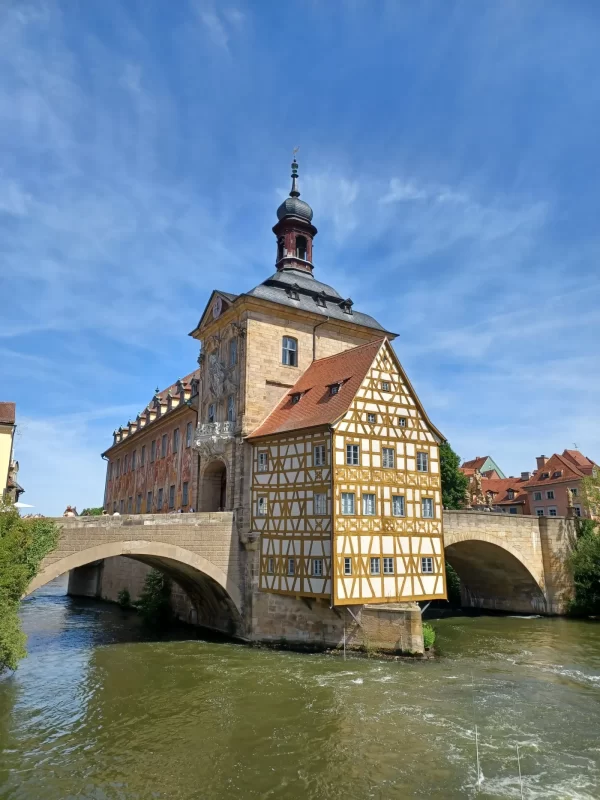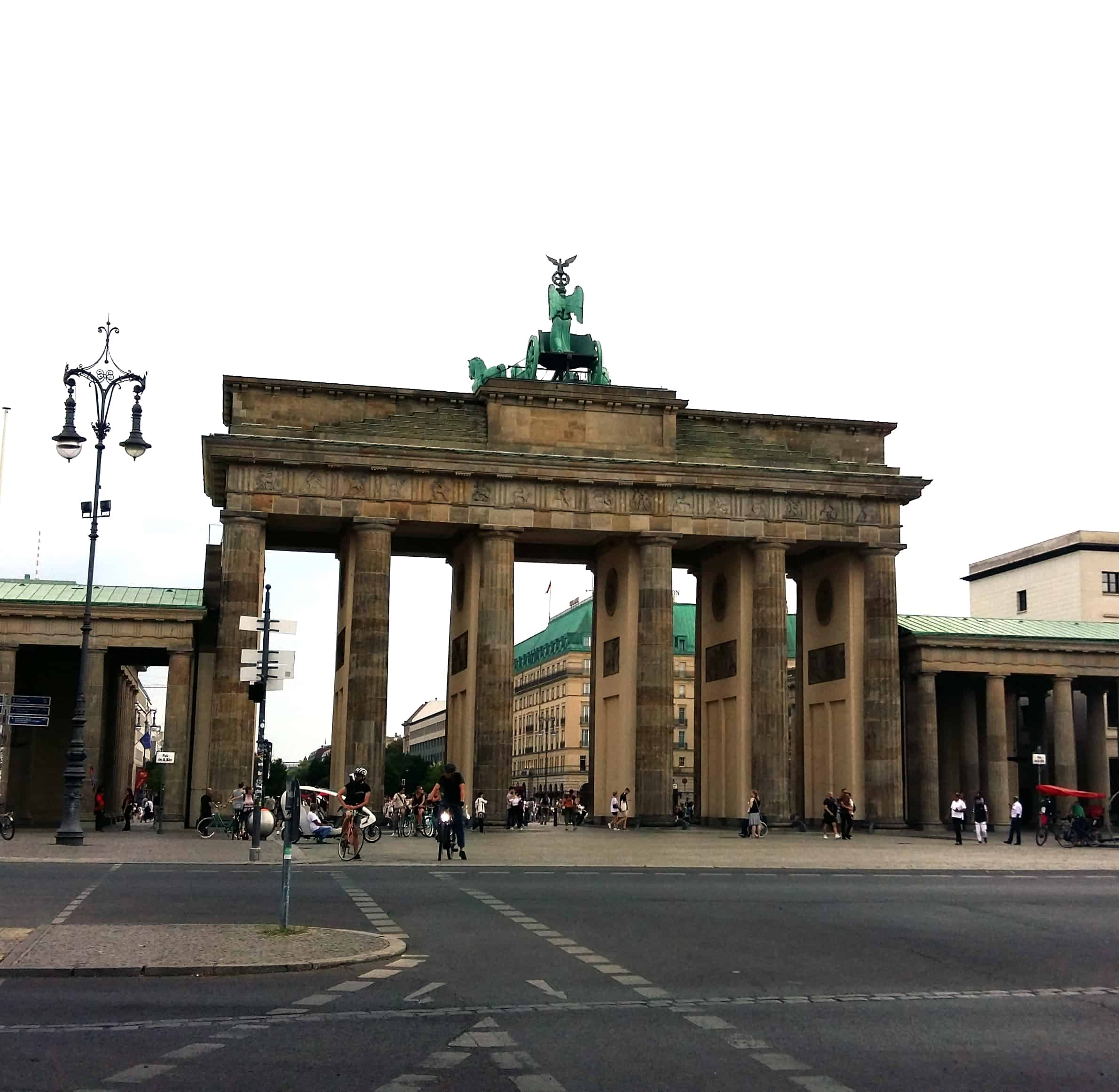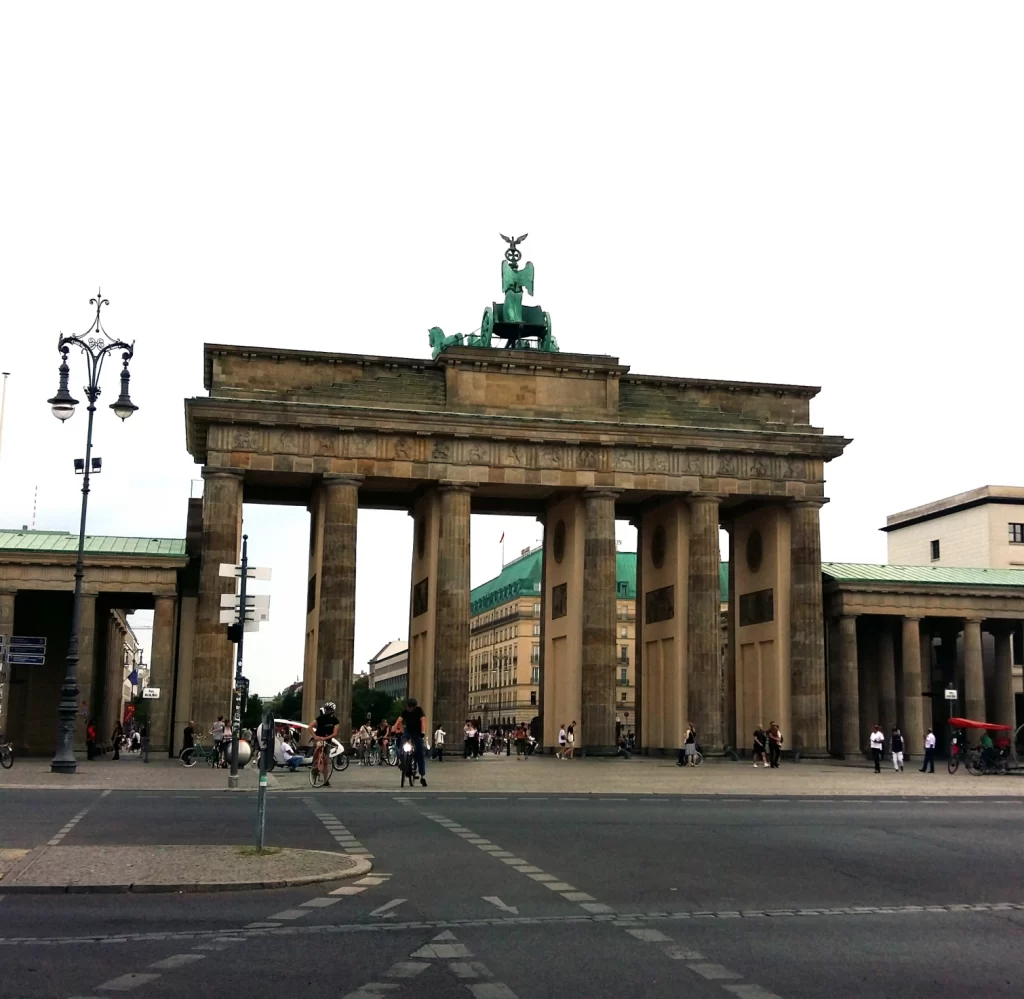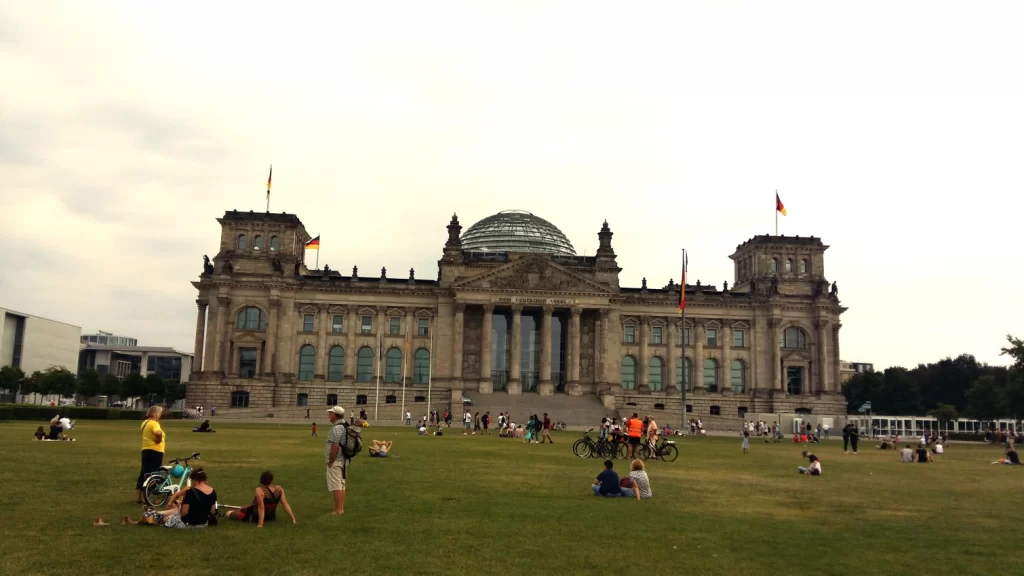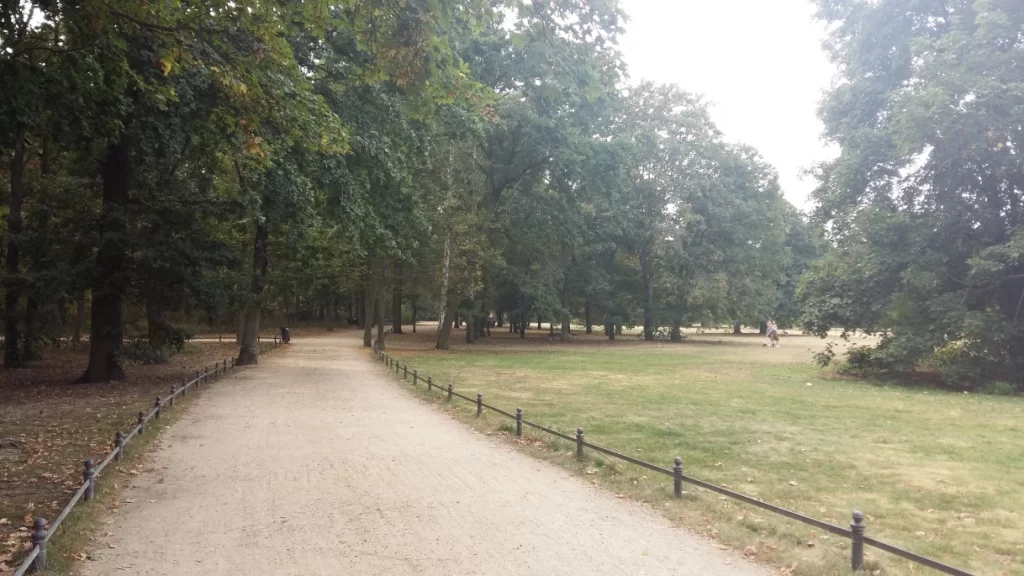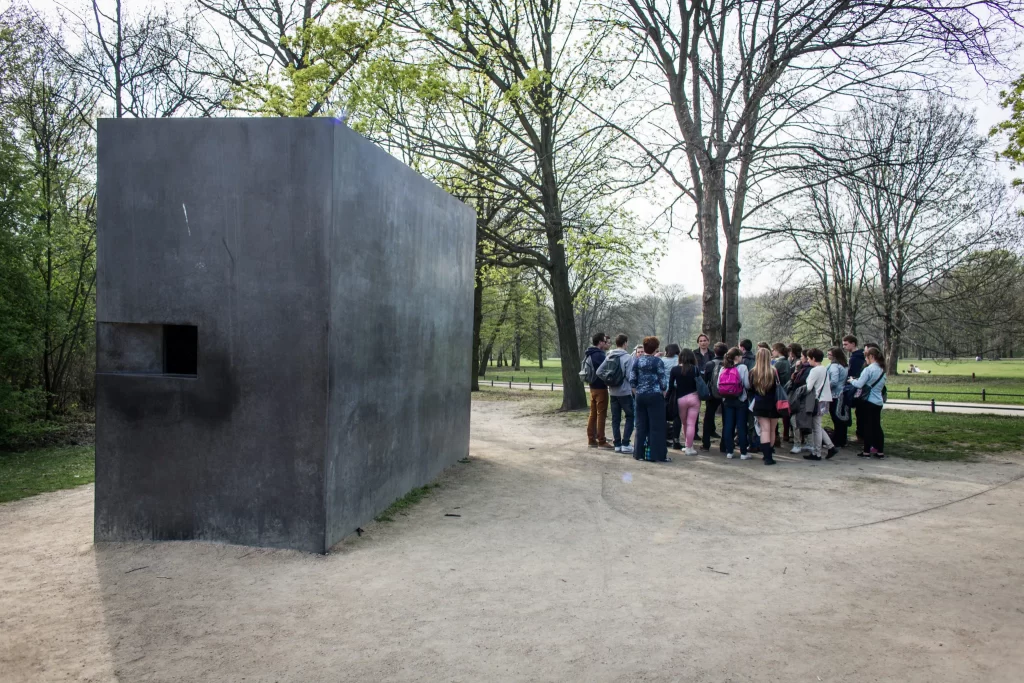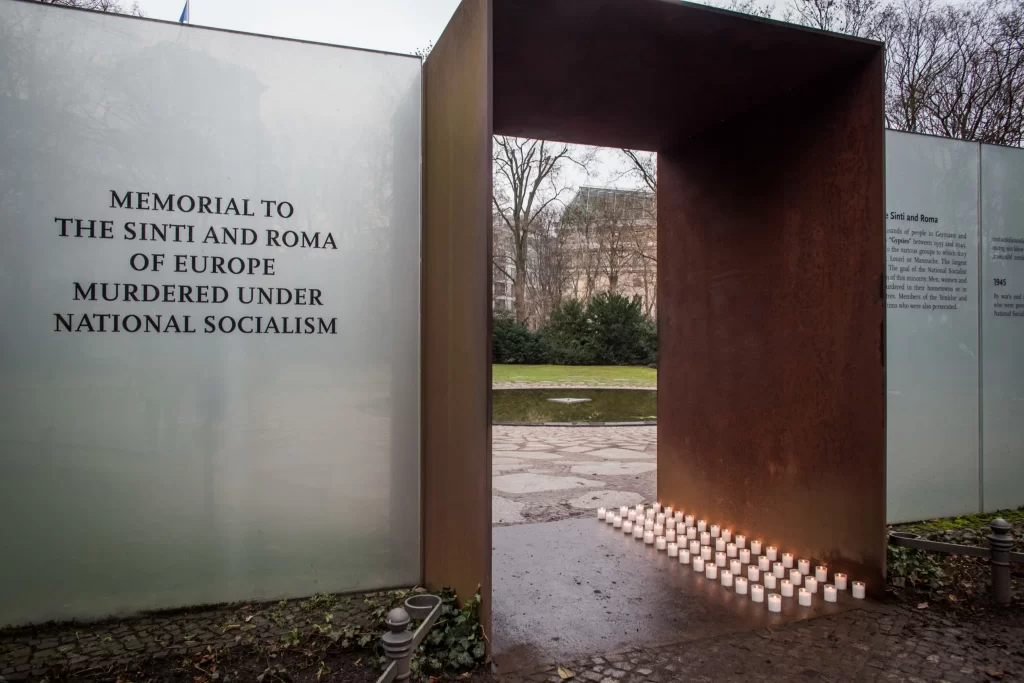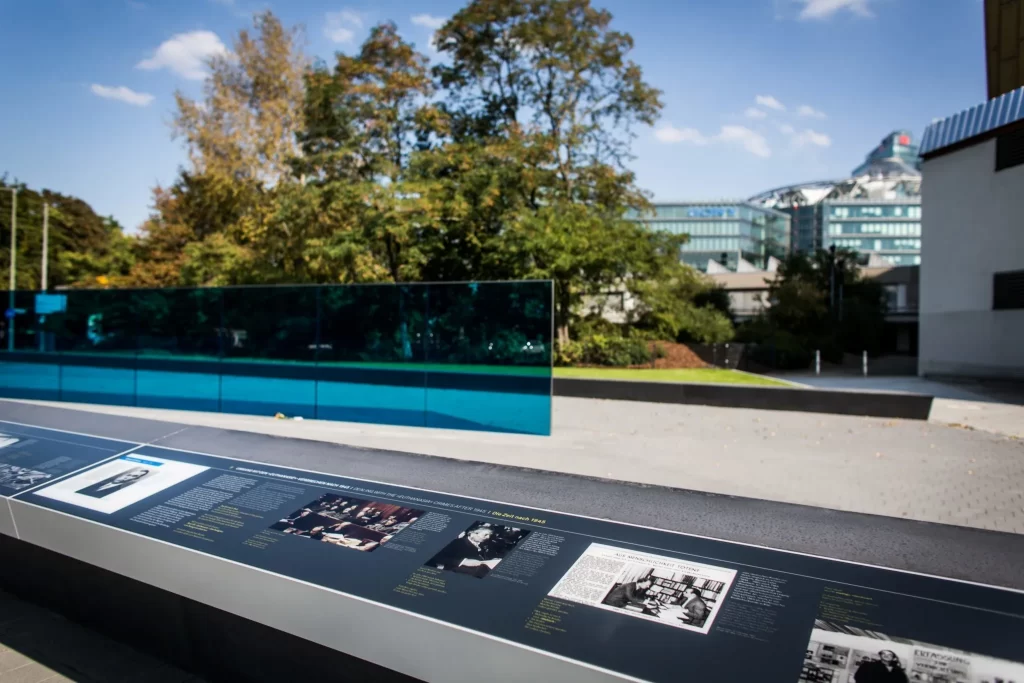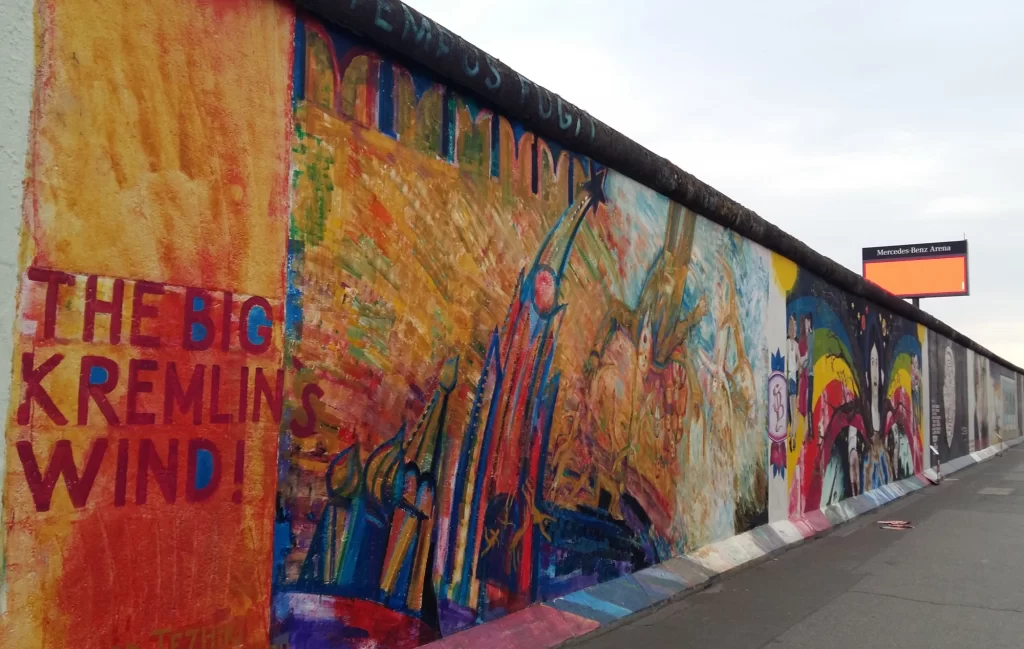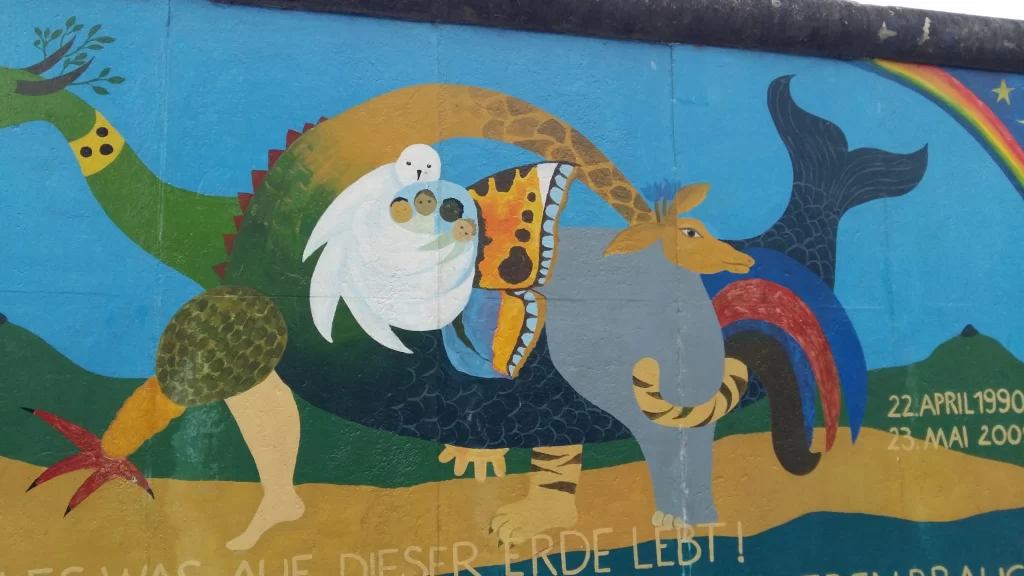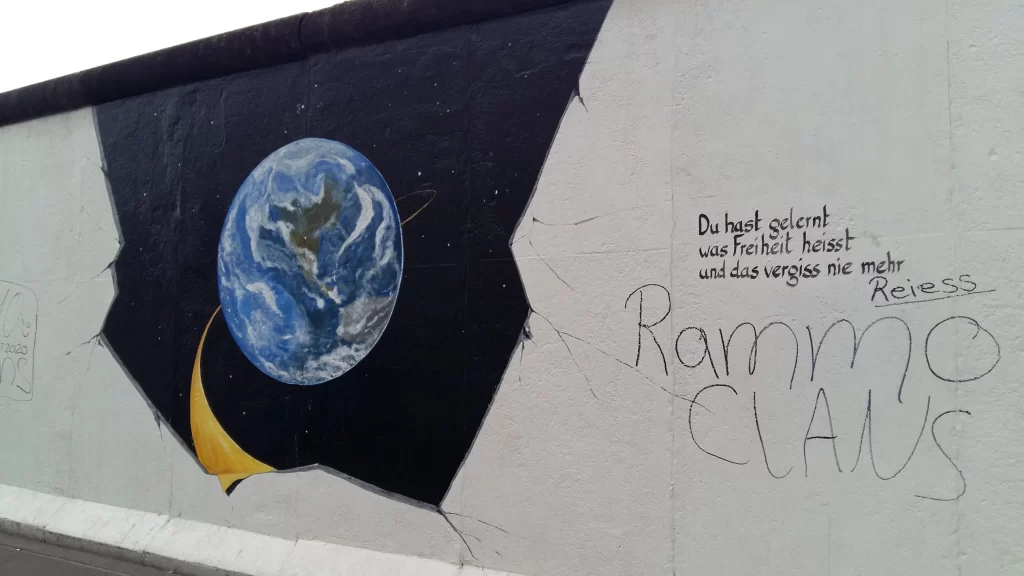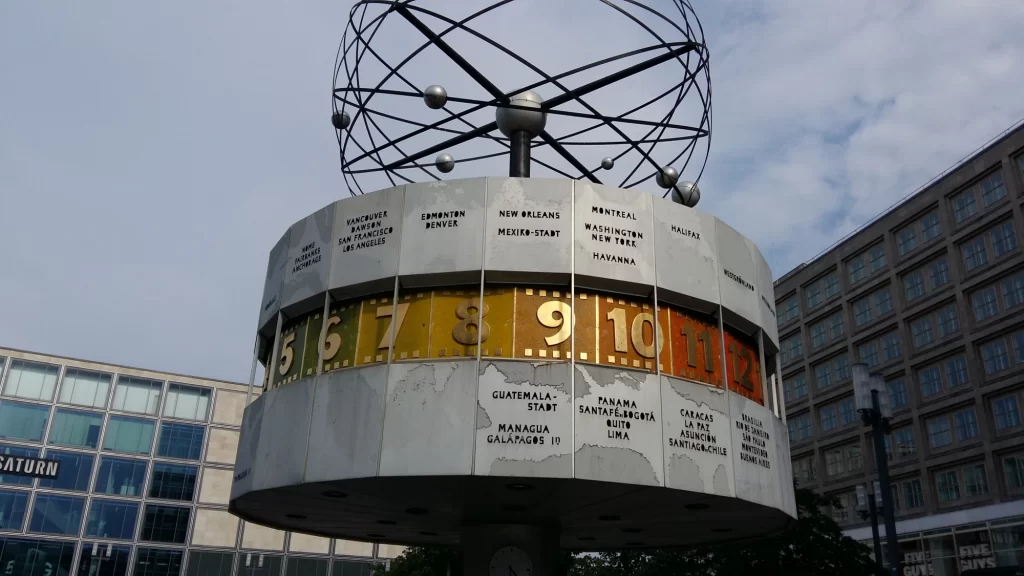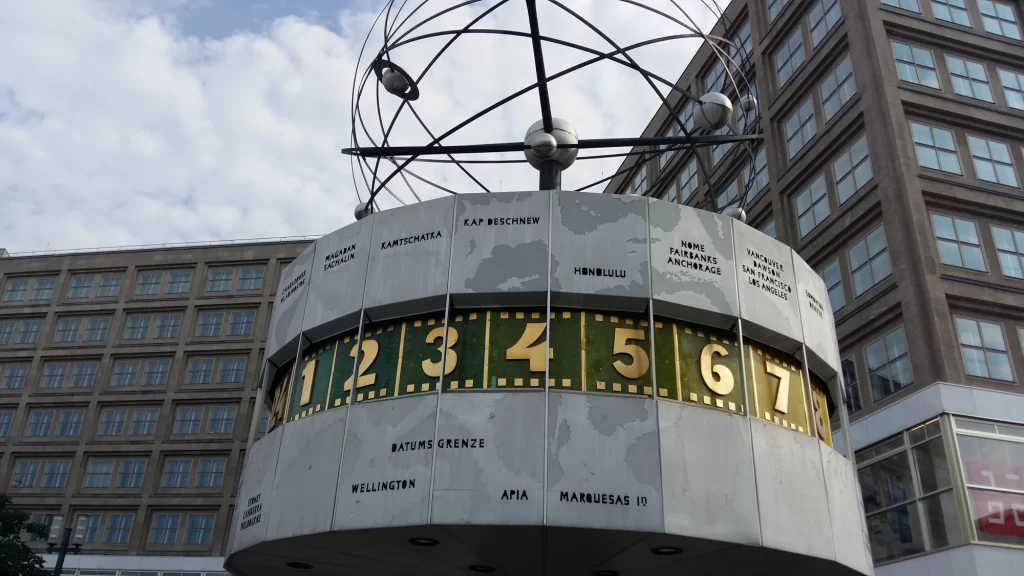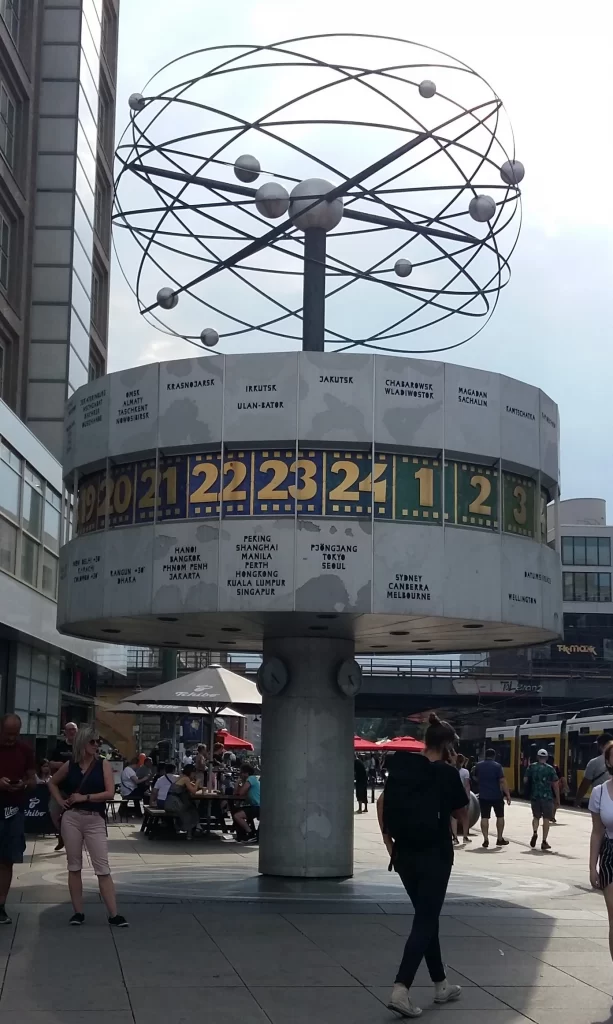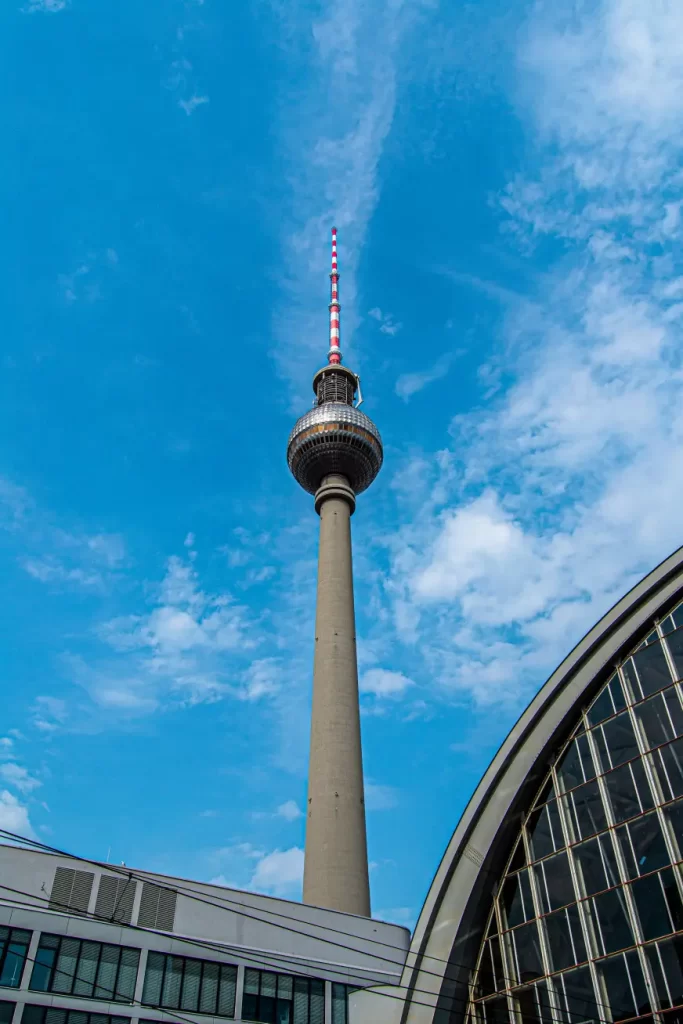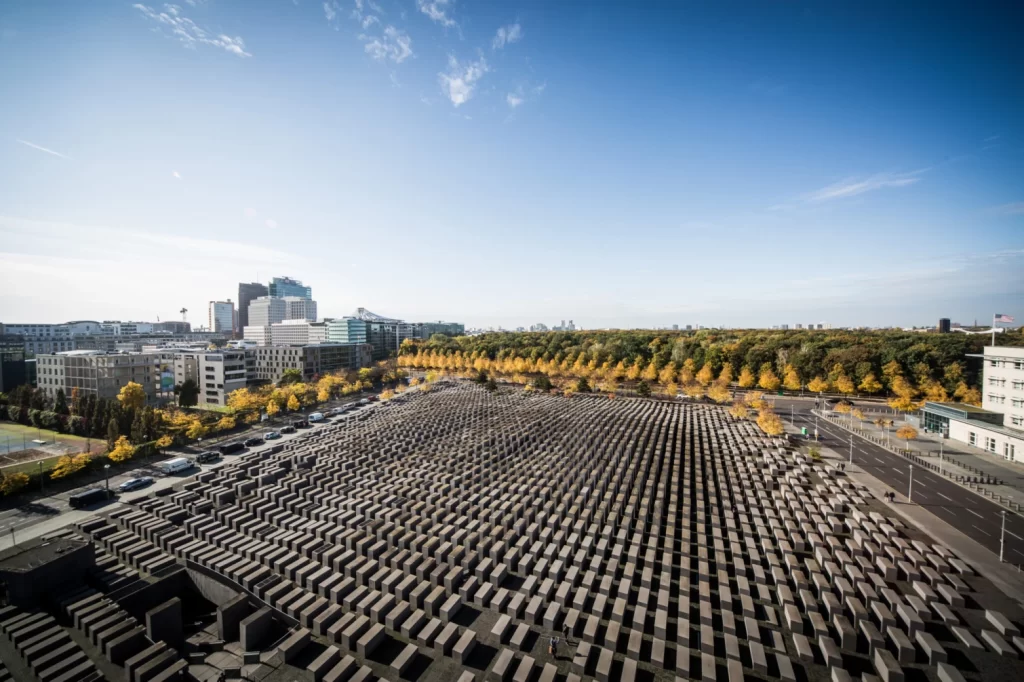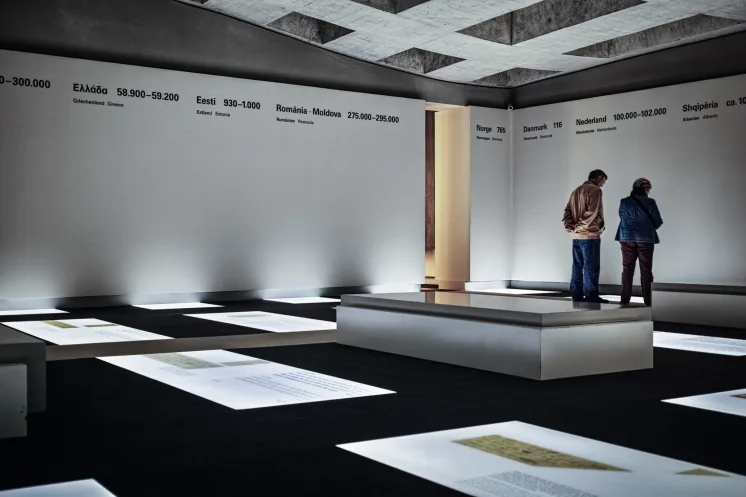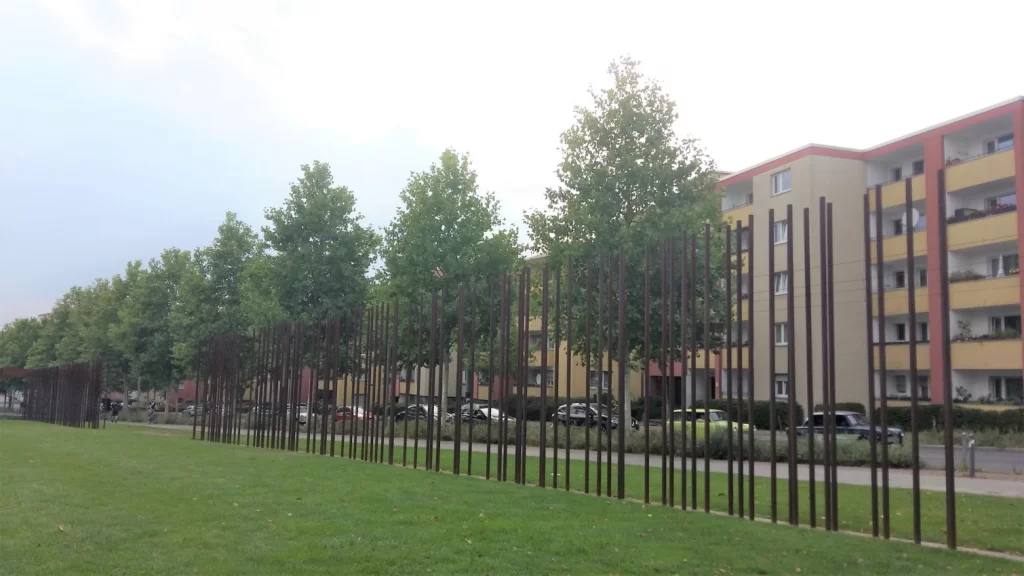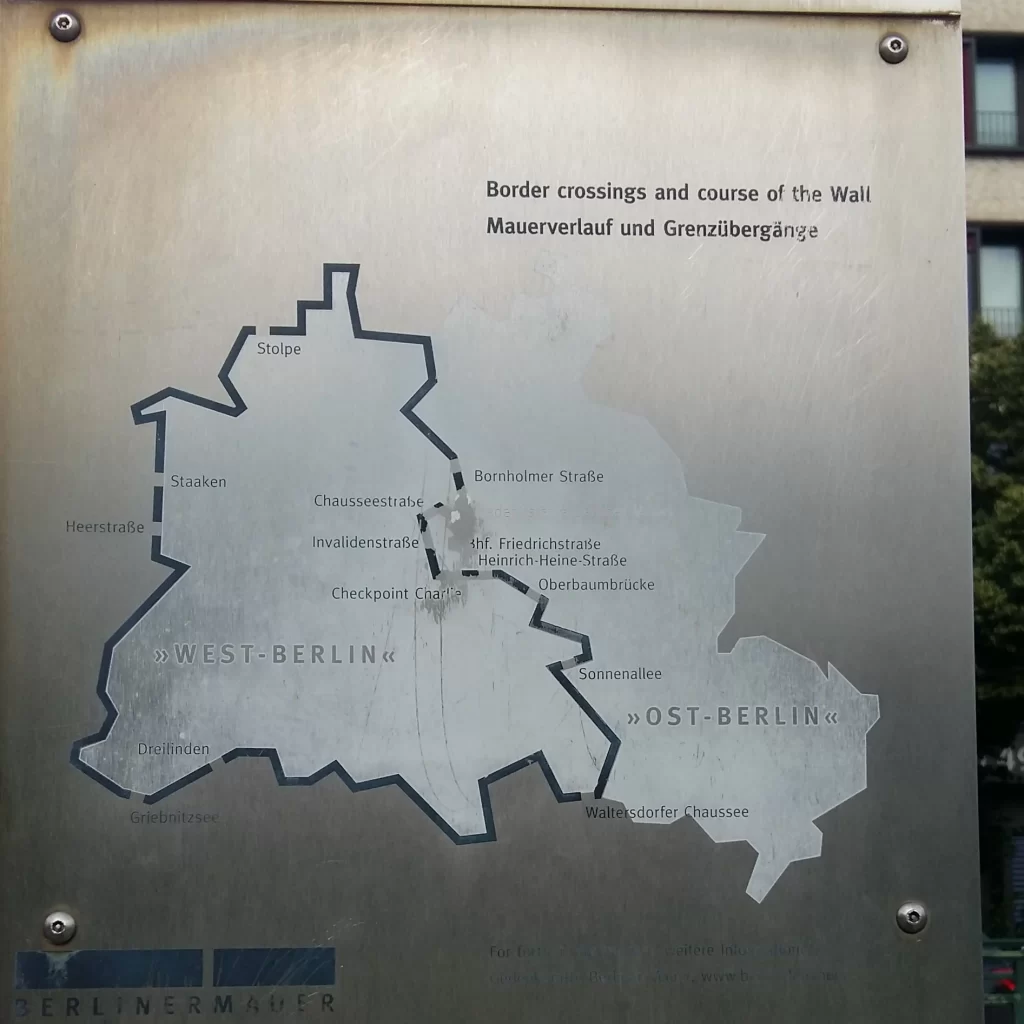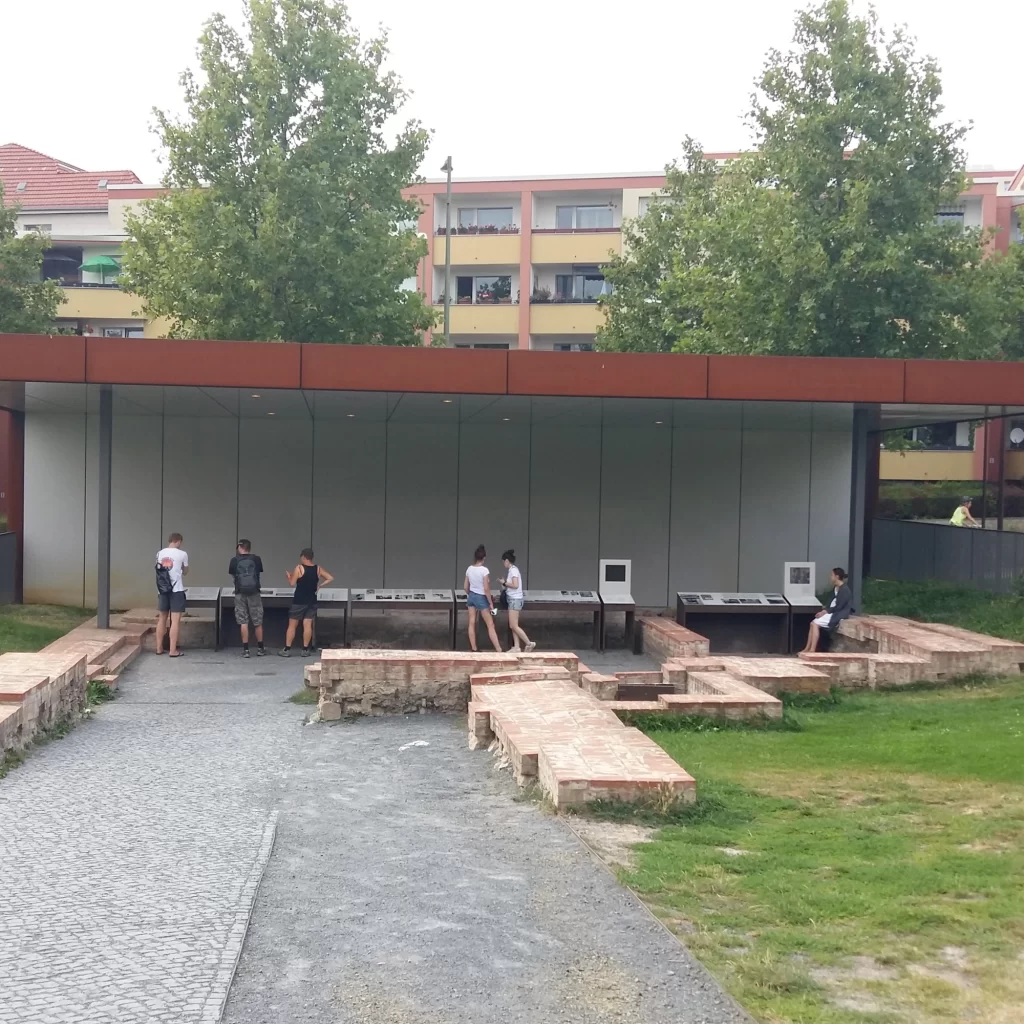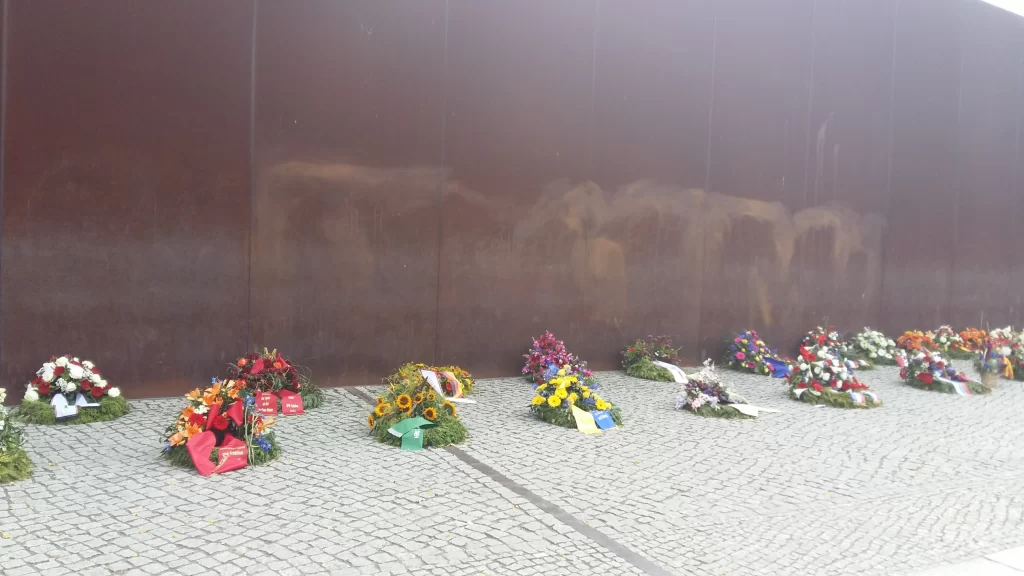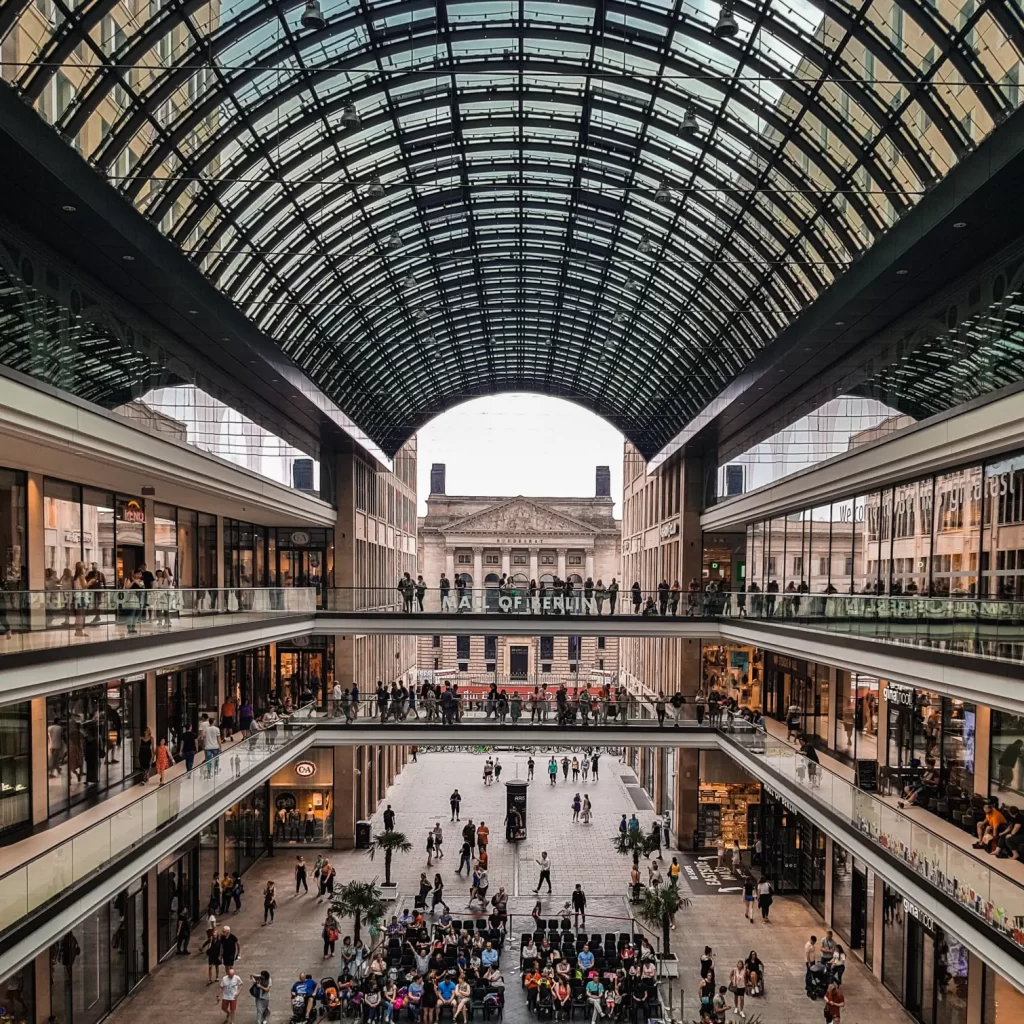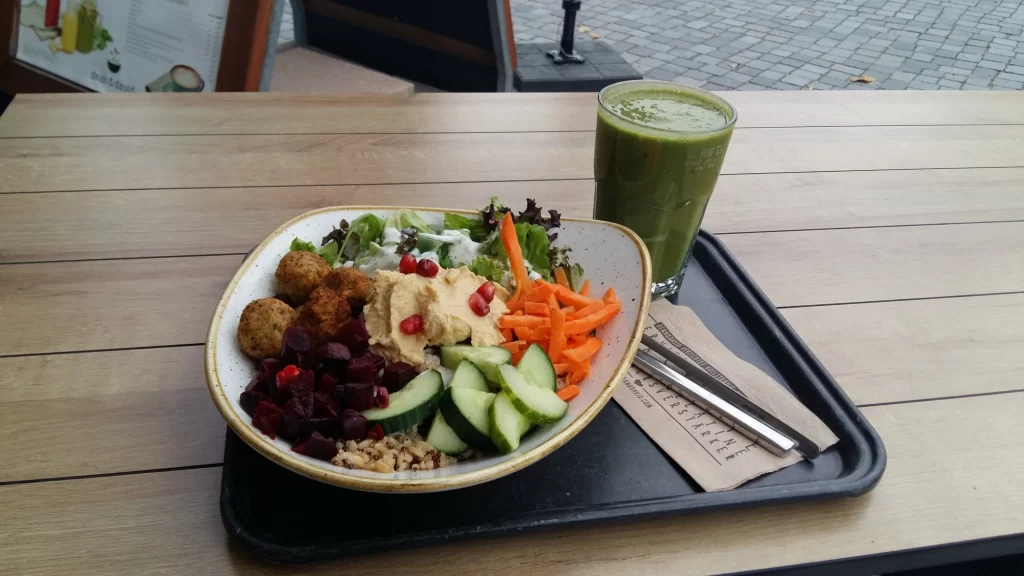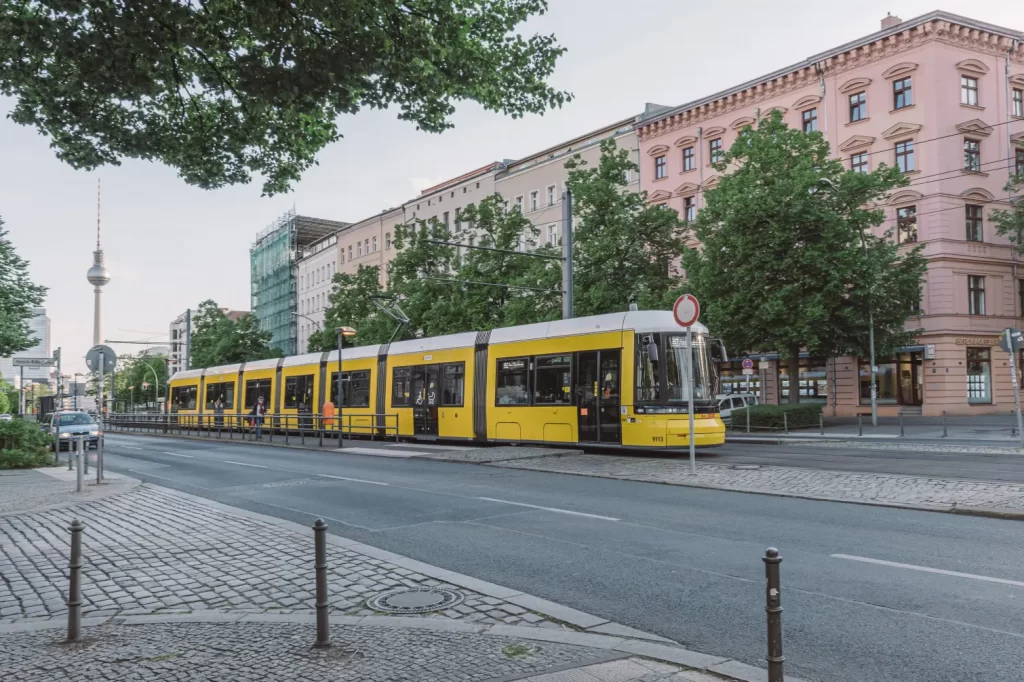Last Updated: July 22, 2024
Servusla from Bamberg! I spent a day here in July 2022 and this charming town is in Oberfranken (Upper Franconia) in northern Bavaria, Germany. So I’m thrilled to share the Ultimate Travel Guide to Bamberg with you!
Bamberg was first mentioned in 902 AD and is famous for its many well-preserved historic buildings. It also has Europe’s largest city wall that’s still intact today. Since 1993, Bamberg has been a UNESCO World Heritage Site.
Bamberg’s nickname is the “Rome of Franconia” because it was built on seven hills, similar to Rome. The Regnitz river flows right through the town. Today 80,000 people live here and a sixth of them are university students.
Disclosure: I only recommend products that I’ve used in the past, and all opinions expressed in this post are my own. This post contains affiliate links. If you use one of the links throughout the page to buy something, I may earn a small commission at no extra cost to you. Thank you!
Things to See and Do in Bamberg
If you like history, Bamberg’s Altstadt (Old Town District) is THE place to visit! There are maps from the 16th century of this area of Bamberg and it still looks the same today as back then!
Altes Rathaus
Address: Obere Brücke, 96047 Bamberg, Germany
Let’s start with the Altes Rathaus (Old Town Hall), Bamberg’s most famous landmark and a popular photo spot. It was first completed in 1370. According to legend, the citizens of Bamberg asked that it’d be built in the town centre, but the bishop in charge refused to grant the land for it.
So instead, the offended townsfolk constructed the Altes Rathaus on an artificial island in the middle of a bridge above the Regnitz river! Sadly, a fire ruined it in 1460, but it was quickly reconstructed and finished in 1461. That’s the one we can look at today.
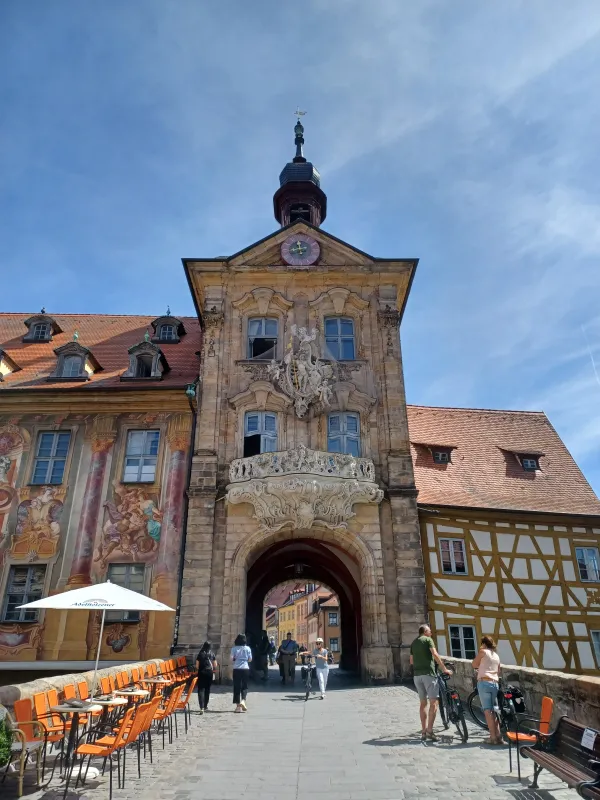
Today, the interior of the Altes Rathaus is a museum where you can look at the Ludwig Collection of Porcelain and Faience, which is one of the oldest of all of Europe.
Moreover, don’t miss the painting facade that Johann Anwander completed in 1755. It shows the four seasons and the four elements, as well as the good and bad characteristics of people.
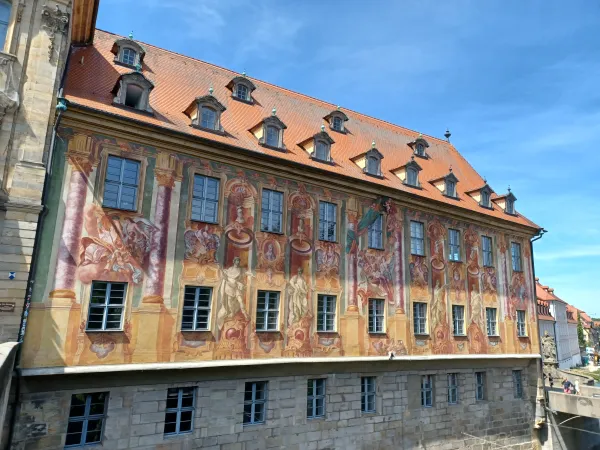
Klein Venedig
Address: Am Leinritt 4, 96049 Bamberg, Germany
Next, take a stroll around the Klein Venedig (Little Venice) district, which was the home of Bamberg’s fishermen in the past. It’s right next to the Regnitz River.
There are lots of half-timbered houses built in the Middle Ages that are sitting peacefully next to each other.
Same as in Venice, feel free to hop onto one of the gondolas sitting by the shore. This gave this quaint and picturesque neighbourhood of Bamberg its name.
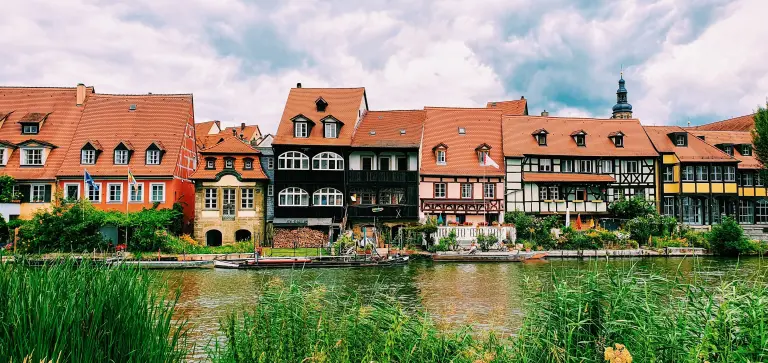
Bamberger Dom
Address: Domplatz 5, 96049 Bamberg, Germany
After climbing up one of Bamberg’s hills, you’ll find yourself in front of the Bamberger Dom (Bamberg Cathedral). This impressive building was finished in 1012 but burned down twice (!) in the next few centuries.
The one we can visit today was rebuilt in the 13th century and is a late Romanesque building with four towers. It took a long time to rebuild it, so a Gothic architectural style was added as well.
You can find Pope Clement II’s (died in 1047) marble tomb here, same as Emperor Heinrich II (973-1024) and his wife Kunigunde of Luxembourg’s (975-1033) tombs. There’s also the Bamberger Reiter (Bamberg Horseman) statue.
Private guided tours of the cathedral can be booked, but are not possible during mass times.
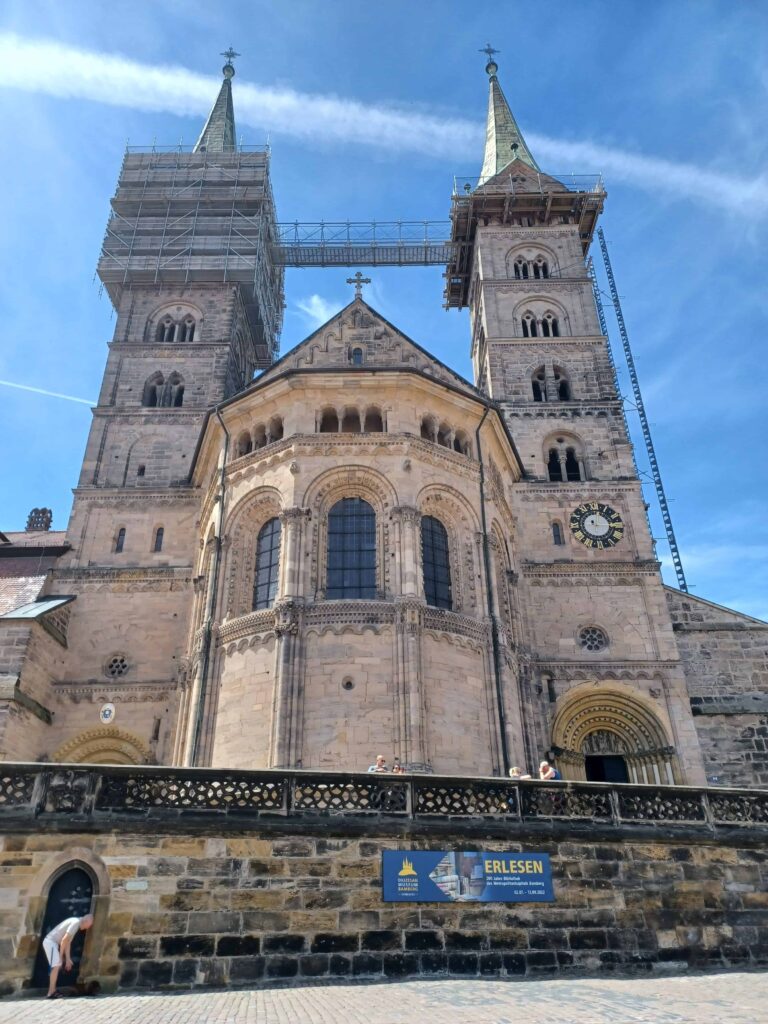
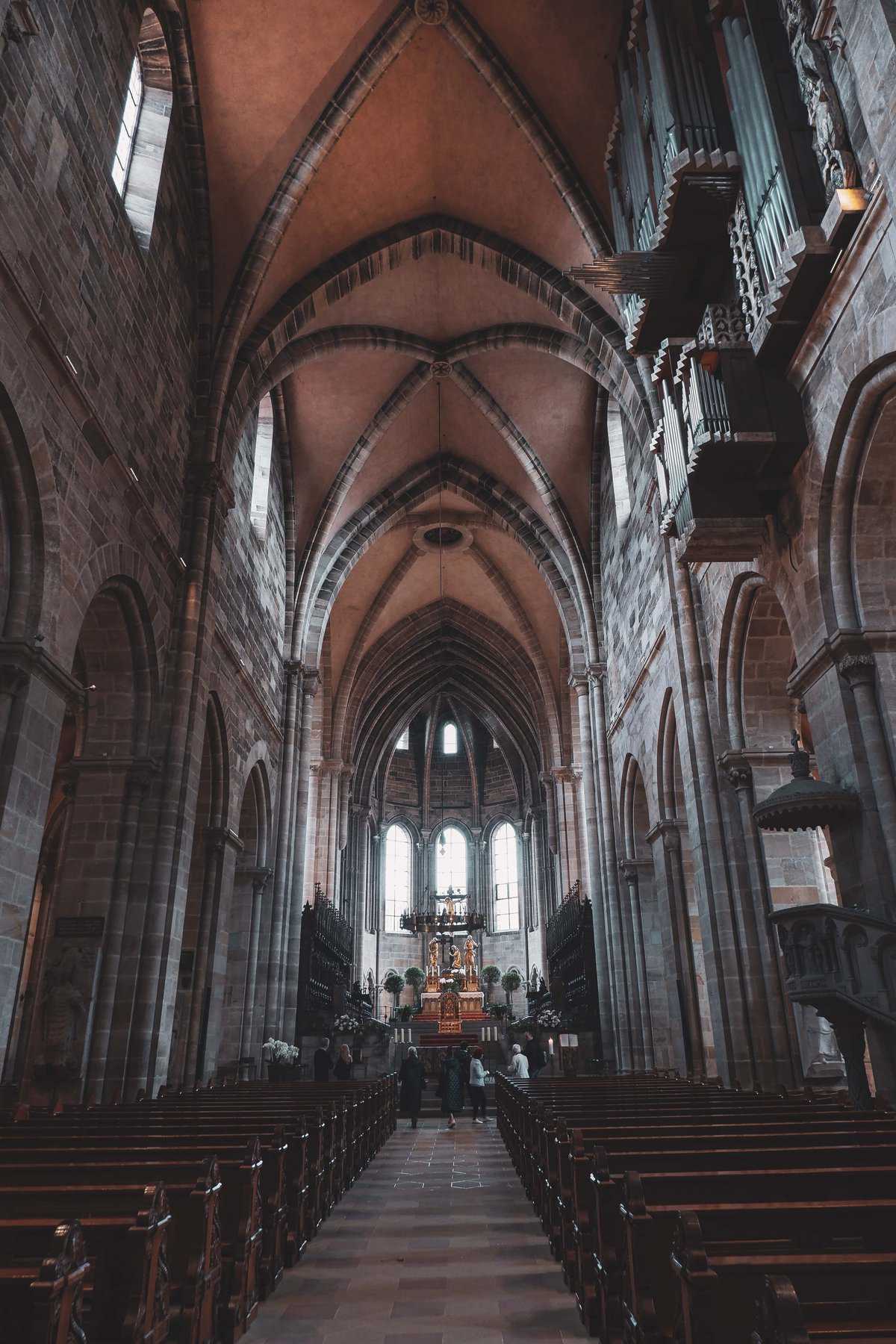
The Bamberg Cathedral from the outside and partial interior area. The photo on the right is by Sergey Zolkin on Unsplash.
Neue Residenz
Address: Domplatz 8, 96049 Bamberg, Germany
On the opposite side of this square you’ll see the Neue Residenz (New Residence), that was completed in 1703. It was the home of the prince-bishops of Bamberg until 1802.
You can look at more than 40 staterooms during an independent or guided tour, as well as the State Gallery with its old German and Baroque paintings.
Moreover, the Neue Residenz is equipped with stucco ceilings, furniture, and rugs from the the 17th and 18th century, as well as the prince-bishop’s apartments.
Please note that you can only visit the apartments if you book a guided tour. The Neue Residenz is open year-round.
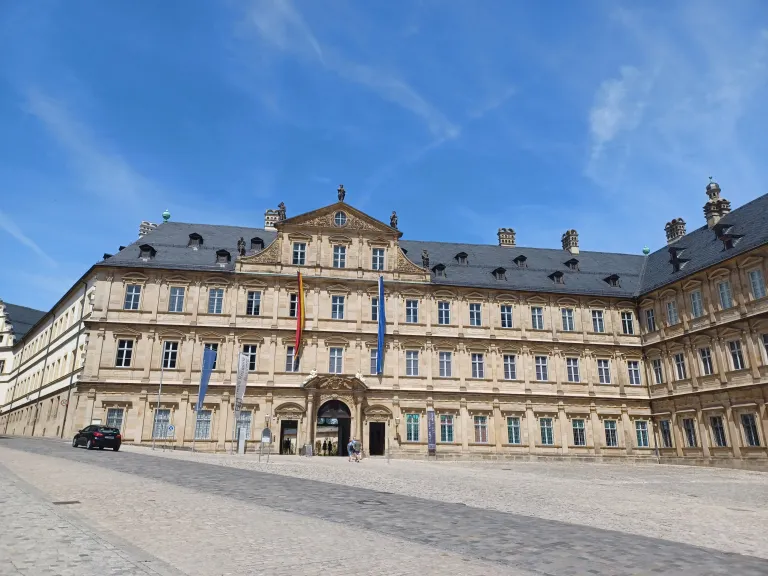
Rosengarten
If you’re in Bamberg between April and October, be sure to check out the Rosengarten (Rose Garden) behind the Neue Residenz. It covers 3,500 sq meters (0.86 acres) and around 4,500 roses of 50 varieties bloom here every year.
During the 16th century, it was a Renaissance garden. But in 1733, Prince-Bishop Friedrich Carl von Schönborn ordered his workers to turn it into a Baroque garden. You can also relax at the Garden Café and enjoy the beautiful view of Bamberg. There’s no fee to visit the Rosengarten.
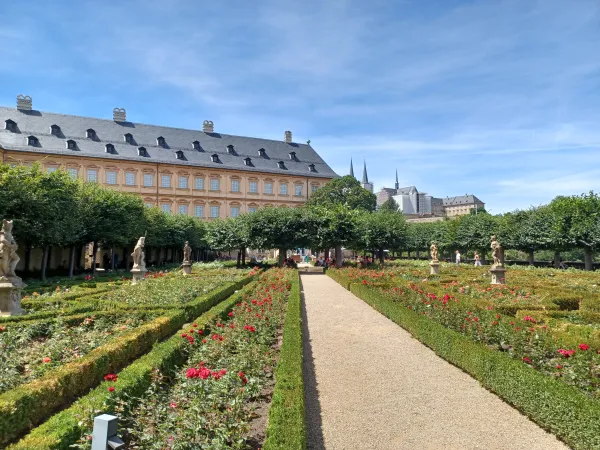
Staatsbibliothek Bamberg
Address: Domplatz 8, 96049 Bamberg, Germany
Then, take a look at the Staatsbibliothek Bamberg (Bamberg State Library) next door. It was founded in 1803 and has been a part of the New Residence estate since 1966.
Here you can look at more than 1,000 unique medieval manuscripts and three among those are part of the UNESCO Memory of the World Register.
This library collates the collections of the formerly existing monasteries of the Bamberg area and the old Bamberg University. It’s nice to take a break from exploring Bamberg here and look at some of its books. Admission is free and the historic ceiling looks super impressive as well!

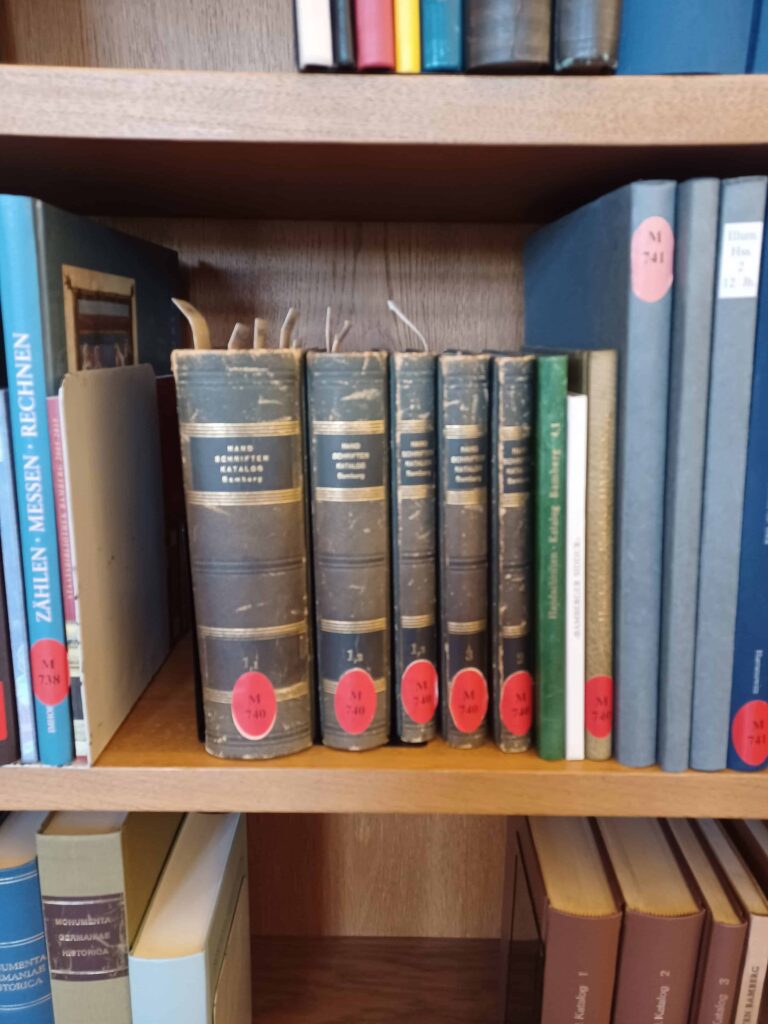
The Staatsbibliothek Bamberg and some cool antique books!
Bamberg’s Brewery Culture and Rauchbier
Bamberg has lots of narrow medieval streets to explore while wandering around. Almost everywhere you look, there are some cool little historic details about Bamberg to find. So I recommend not worrying about getting lost and just keeping your camera ready. 😉
For example, I stumble upon Bamberg’s oldest brewery plant, established in 1533! Bamberg has been the home of tons of breweries for many years.
Bamberg is known for its Rauchbier (smoked beer), a local specialty unique to this town. The malt is dried above an open beech wood fire instead of an oven, which gives it its unique smoky smell and taste.
If you want to learn more about Bamberg’s beer history, join a Guided Beer History Tour (with optional tasting) or a take a self guided Bierschmecker Tour (Beer taster tour) through Get Your Guide!
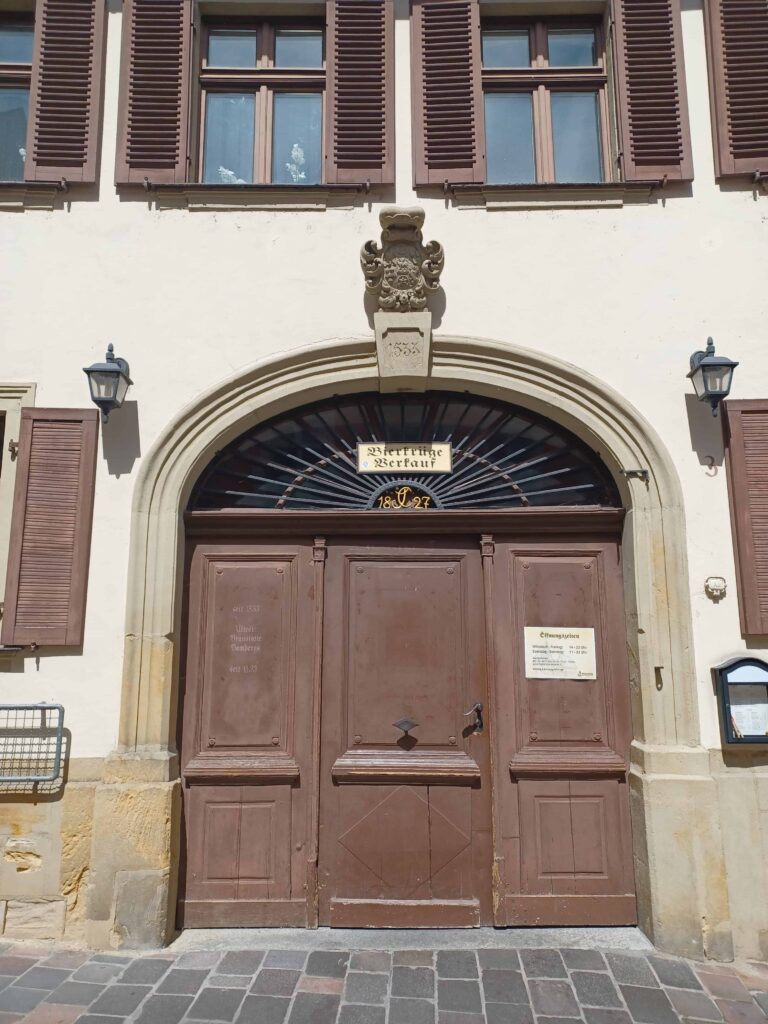
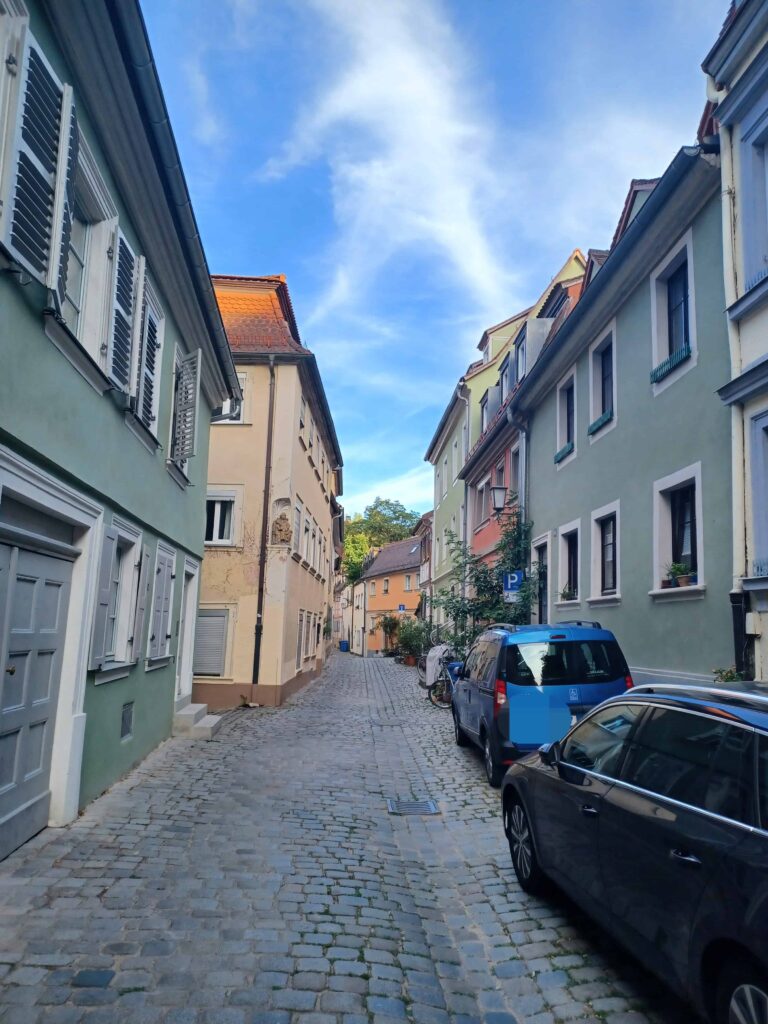
Bamberg’s oldest brewery plant (est. 1533). The sign at the top translates to “Beer mugs for sale”.
Learn about The Bamberg Witch Trials
Although there are almost no visible remains today, I think it’s important to learn about one of Bamberg’s darkest and most depressing eras: The Witch Trials from 1595 to 1632.
The people of the Bamberg area went through some rough times during this era, including several “little Ice Ages”, when frost destroyed the entire harvest. So many people were struggling to survive.
Moreover, the plague was going around again and an estimated 4.5 to 8 million people died during the Thirty Years’ War (1618-1638). Many people had experienced better times in the past, so witches and wizards were suspected to have caused the cold snaps and plague by using black magic.
So Bamberg’s citizens soon forced the authorities to investigate in this matter. Soon after, witch and wizard suspects were arrested. Then they had to suffer extreme torture until they confessed the harm they were accused of. In the end, they were burned to death.
Women and men of all classes and ages also had to name their supposedly accomplices, so the number of suspects and prisoners grew very quickly.
As a suspect, authorities took you to the Zeiler Hexenturm (Zeil witch tower) in Zeil am Main (30 minutes northwest of Bamberg) and after 1627 to the infamous Drudenhaus or Malefizhaus (witch prison) in Bamberg. It had 28 cells.
Nowadays there are still more than 800 interrogation records of the witch trials at the Bamberg State Library to look at.
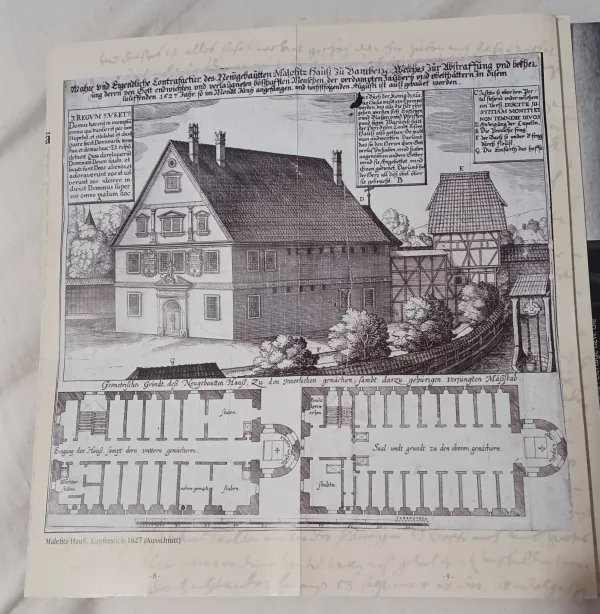
One of the famous victims was Johannes Junius, who was Bamberg’s Major for several years. He was arrested in June 1628. After a week of terrible torture, he confessed to be a wizard and servant of Satan. Before he was burned to death on August 6, 1628, he wrote a letter to his daughter Veronica from jail, which one of his guards smuggled out.

When the Witch Trials finally ended in 1632, more than 1,000 innocent people (every 13th Bamberg resident) had lost their lives.
The worst period was between 1626 and 1632 under the rule of Prince-Bishop Johann Georg II Fuchs von Dornheim, when about 900 people were executed. It was one of the four major witch trials that happened in Germany and one of the biggest in history.
In case you’re wondering, the Malefizhaus, that was torn down in 1635, stood at Franz-Ludwig-Strasse 7 in Bamberg, which is a pharmacy today.
If you’d like to learn more about this tragic era of Bamberg’s history, you can join a Witch Trial tour through Bamberg (in German only).
Shopping in Bamberg’s Altstadt and Tourist Info Centre
Bamberg’s last attraction is its awesome shopping opportunities. Whether you like independent boutiques or chain stores close to the Altstadt district, such as dm Drogeriemarkt (drug store), C&A (clothing store), book stores, Jack Wolfskin (outdoor apparel/ equipment store), etc., Bamberg has it all!
The Bamberg Tourist Information Centre (Geyerswörthstrasse 5, 96047 Bamberg, Germany) is open year-round. The staff sells souvenirs and tickets, provides brochures and maps, and can help with booking accommodations. There are public washrooms and locker boxes for rent as well.
Where to Stay in Bamberg
I stayed at the Altstadthotel Molitor (Obere Mühlbrücke 2-4, 96049 Bamberg, Germany), a historic budget hotel within Bamberg’s Altstadt district. It is a restored mill that was first mentioned in 1410. It was still in the mill business during the 20th century until it was turned into a guesthouse in 1992.
The room is simple but very clean with a spacious bathroom, it is quiet at night, and the Front Desk staff is very welcoming! The historic design of the room, but also the artifacts and paintings displayed in the hallways make this hotel unique.
For example, you can look at an old millstone found during the restoration period and an original part of a baroque handrail used at this place from 1744.
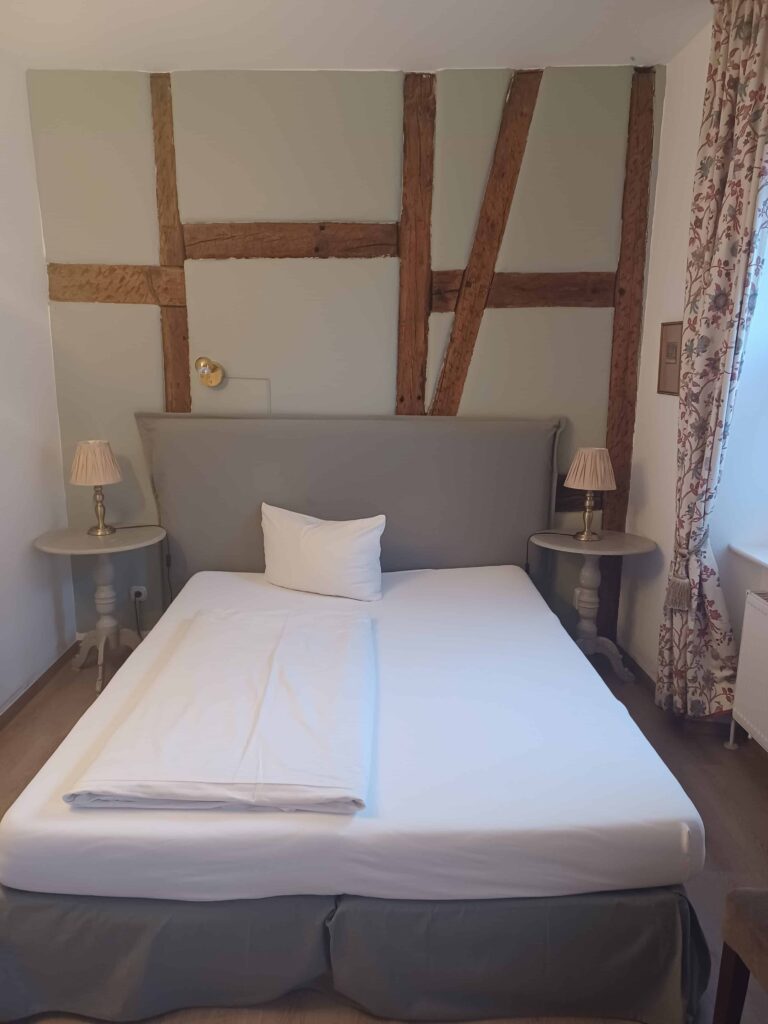
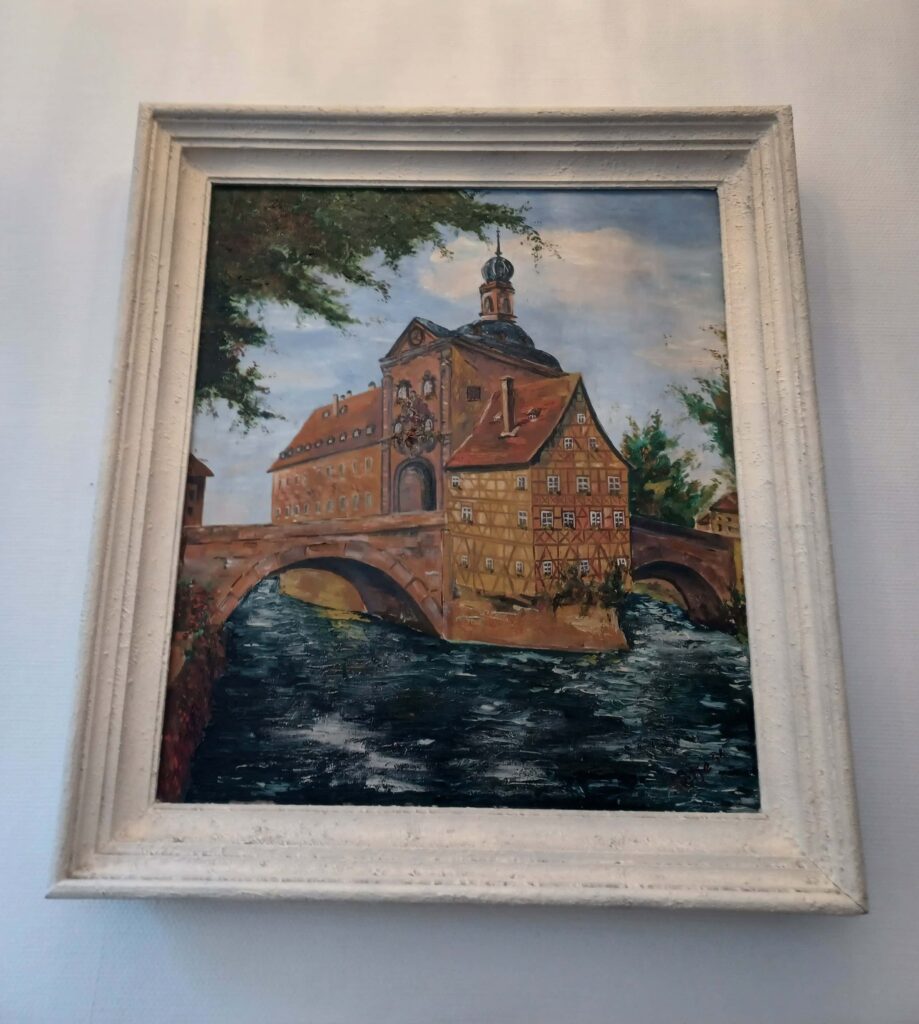
My room and a painting of the Altes Rathaus in the hallway.
Their tasty and large buffet-style breakfast is available for a surcharge of 12 EUR. The bright-coloured design of the breakfast room is super inviting and cozy as well. All rooms have free Wi-Fi, work station, and cable TV.
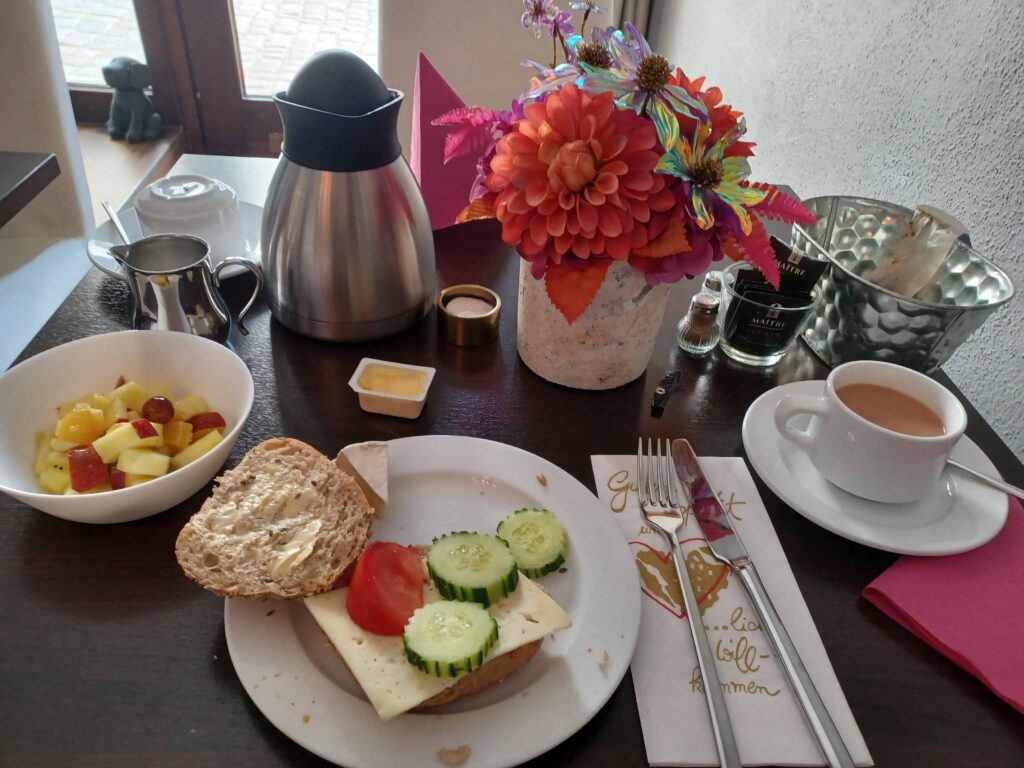
Where to Eat & Drink in Bamberg
I had dinner at Der Pelikan (Untere Sandstrasse 45, 96049 Bamberg, Germany), which has been a part of Bamberg’s food scene since 1763! These days, they serve a mix of Franconian and Asian cuisine.
You can choose from the famous Bamberger Hörnla (pastry that looks similar to a croissant) or a Franconian bratwurst, both cooked in a wok with veggies, Thai curries, duck penang, fried rice, and more! All dishes are made from scratch and freshly prepared.
I went for their Thai Yellow Curry with veggies and tofu, and damn, it was really good! As mentioned before, Bamberg is known for its Rauchbier (smoked beer), so I tried the Schlenkerla Rauchbier. It’s one of Bamberg’s seven local breweries and was first mentioned in 1405.
What a perfect combo of a healthy dinner and a local specialty!
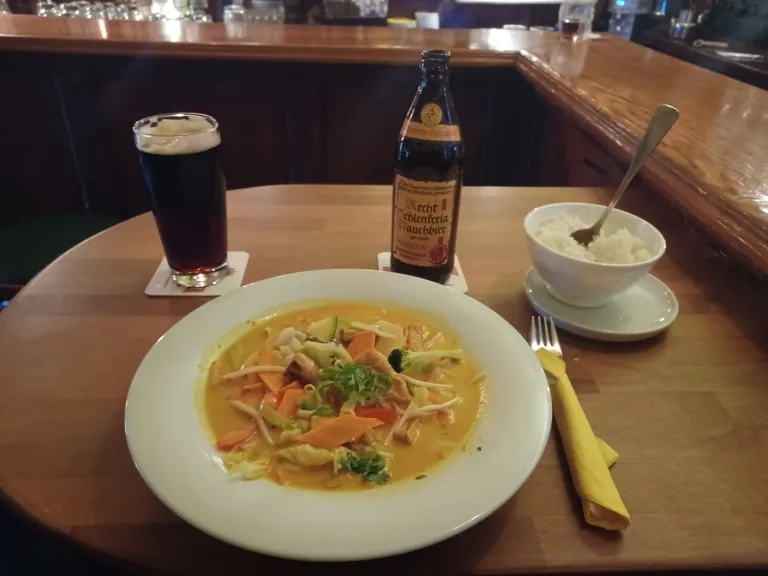
You can sit outside (summer only) or in the indoor bar area. Please note that you can pay with cash only, no credit cards are accepted at this time.
Der Pelikan is open six days a week (closed on Wednesdays) and hosts events regularly, e.g. Halloween Dance, 80’s Parties, and concerts.
How to Get to and Around Bamberg
If you’re driving, Bamberg is 63 km (39 miles) from Nuremberg, 101 km (63 miles) from Würzburg, and 229 km (142 miles) north of Munich. Thanks to the great highway network, these cities are easy to get to.
Nuremberg Airport and Munich International Airport are the closest airports to Bamberg, which offer flights from and to European and international destinations.
Bamberg is also easily accessible by train via the Deutsche Bahn (German railway company). Both regional and intercity express (fast) trains stop at Bamberg’s train station many times a day from different directions.
Flixbus also goes to Bamberg quite often and is one of budget-friendliest transportation options.
Bamberg also has a local bus, although it’s quite nice to walk around independently, join a walking tour, or renting a bike. Please find an overview of bike rental places in town here.
If you’re cycling or walking around Bamberg, just expect to be going uphill quite a bit, because of the seven hills the town was built on.
Hopefully I inspired you to visit this charming town someday 🙂
Traveling around Germany for a bit? Then check out these posts:
The Most Beautiful Cities of Germany by The Abroad Files
Places to Visit Around the North Sea Region of Germany by Brandon at Zimmin Around the World
How to Spend 24 Hours in Berlin, Germany by Joey is a Traveler

